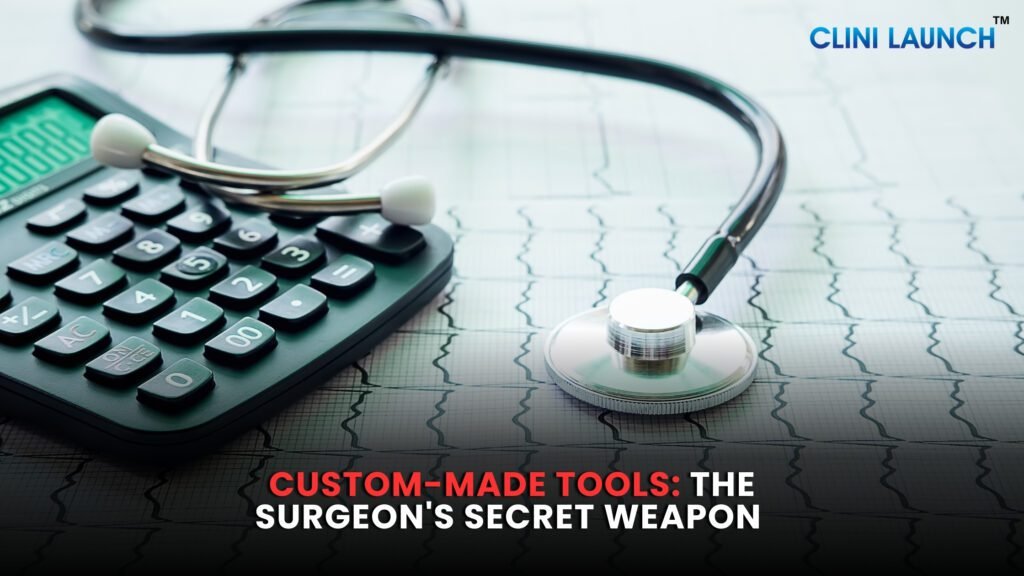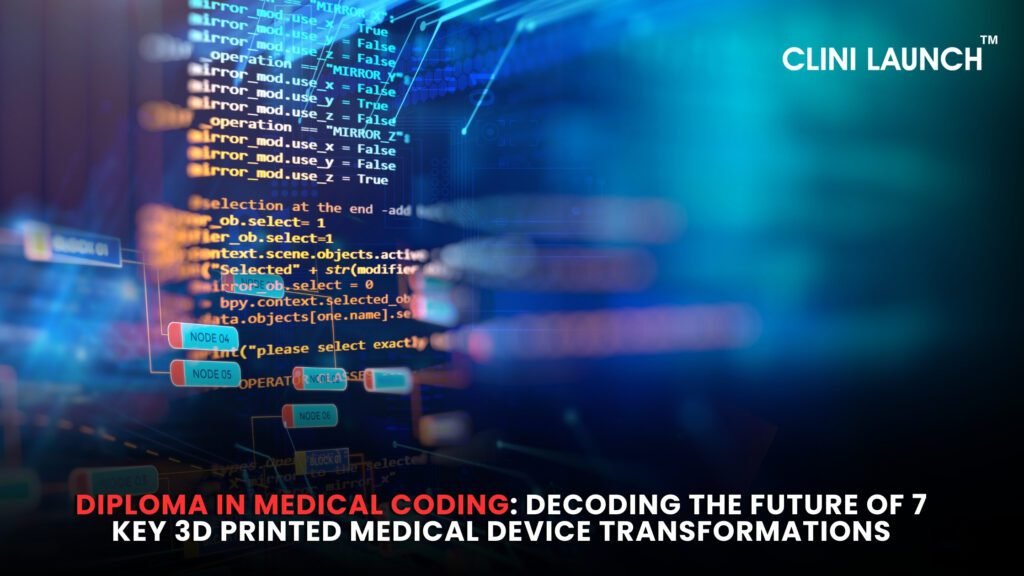Introduction
Ever wondered how a shattered bone becomes a perfect, 3D-printed replacement? Or how a surgeon navigates a labyrinth of arteries with a model built from pixels? We’re not talking science fiction; we’re talking about the silent revolution happening in medicine, powered by 3D printing. But here’s the twist: behind every incredible advancement, there’s a secret language, a code that unlocks its potential. It’s the language of medical coding, and it’s about to change everything you thought you knew about healthcare. Intrigued? Good. Because you’re about to discover how a simple diploma in medical coding certification can place you at the heart of this extraordinary transformation.
What is meant by 3D Printing?
The additive manufacturing process involves 3D printing, which builds objects layer by layer from a digital model. This process begins with a detailed 3D design that is sliced into thin layers. These layers are then sequentially deposited by the printer to form the final product.
Key technologies are:
- Selective Layer Sintering (SLS)
- Direct Layer Metal Sintering (DMLS) and Electron Beam Melting (EBM)
- Stereolithography (SLA)
- Fused Deposition Modeling (FDM)
Materials used in 3D Printing:
- Ceramics
- Polymers
- Metals
Personalized Prosthetics: The Art of Crafting Second Chances
Imagine a world where prosthetics don’t just replace limbs; they become extensions of the person, perfectly tailored to their unique form. 3D printing makes this a reality, crafting personalized limbs that move and feel like the real thing. But how do we capture the magic of these bespoke creations? The answer lies in the intricate codes that describe their design and function. This isn’t just about billing; it’s about documenting the story of a patient’s second chance. An advanced medical coding course will reveal the secrets behind these codes, turning you into a storyteller of medical innovation.
In 2022, the global size of 3D printing medical devices market in terms of revenue was estimated to be worth USD 2.7 billion. It’s expected to reach USD 6.9 billion by 2028. It’s growing at a Compound Annual Growth Rate (CAGR) of 17.1% from 2022 to 2028.
Surgical Planning: When Pixels Become Reality (And Lives Are Saved)

Ever wondered how surgeons tackle the most complex cases? They don’t just rely on textbooks; they hold the patient’s anatomy in their hands, thanks to 3D-printed models. These models are like roadmaps, guiding surgeons through intricate procedures with pinpoint accuracy. But translating these digital blueprints into real-world procedures requires a language of its own. Professionals with a diploma in medical coding become interpreters, ensuring every step is meticulously documented, bridging the gap between innovation and patient care.
Bioprinting: The Quest to Build Life, One Layer at a Time
What if we could print organs? What if we could heal injuries by printing new tissue? Bioprinting is pushing the boundaries of what’s possible, promising a future where damaged tissues can be regenerated, and organ shortages become a thing of the past. But this frontier of medicine requires a new lexicon, a way to describe the incredible processes involved. Institutions like Clini Launch Research Institute are pioneering these techniques, and they need coders who can speak this evolving language. An advanced medical coding course is your passport to this uncharted territory, where you’ll learn to decode the future of medicine.
Custom-Made Tools: The Surgeon’s Secret Weapon

Imagine a surgeon wielding a tool designed specifically for their hand, their technique, their patient. 3D printing makes this a reality, creating bespoke surgical instruments that improve accuracy and efficiency. But these aren’t just tools; they’re extensions of the surgeon’s skill. And like any masterpiece, they need to be documented with care and accuracy. This is where medical coders step in, ensuring every detail is captured, every innovation recorded.
Drug Delivery: The Future of Personalized Medicine, One Pill at a Time
What if your medication could be tailored to your DNA? 3D printing is making this a reality, creating personalized drug delivery systems that revolutionize treatment. But how do we track and manage these bespoke medications? The answer lies in the codes that define their composition and delivery. A medical coding certification will empower you to navigate this new era of personalized medicine, where every pill tells a story.
Enroll now: Advanced Diploma in Medical Coding
Point-of-Care Miracles: Bringing Medicine to the Ends of the Earth
Imagine a remote village, miles from the nearest hospital, where a 3D printer creates life-saving medical devices on demand. This isn’t a dream; it’s the potential of point-of-care manufacturing. But how do we ensure these devices are safe, effective, and properly documented? The answer lies in standardized coding practices, ensuring that medical innovation reaches every corner of the world.
The Coders’ Secret: Unlocking the Future of Medicine (And Your Own)

The truth is medical coding isn’t just about numbers and codes; it’s about being a vital part of a revolution. It’s about translating innovation into care, ensuring that every breakthrough reaches the patients who need it most. And by pursuing a medical coding diploma, you’re not just learning a skill; you’re joining a community of visionaries, shaping the future of healthcare.
Conclusion: Your Invitation to the Future
3D printing is more than a technology; it’s a promise, a glimpse into a future where medicine is personalized, precise, and accessible to all. But these future needs interpreters, storytellers, and codebreakers. It needs you. Are you ready to join the revolution? Are you ready to speak the secret language of 3D-printed miracles? The future is calling, and your medical coding certification is your answer. Take the first step towards a rewarding career in this transformative field. Explore our comprehensive advanced diploma in medical coding programs and discover how you can become a vital part of the future of healthcare. Visit Clini Launch Research Institute today!
References
3D Printing in Medical Device Manufacturing: Transforming Innovation with Precision and Personalization
https://www.linkedin.com/pulse/3d-printing-medical-device-manufacturing-transforming-bhat-mvcic
3D Printing Medical Devices Market Size by Component (3D Printer, 3D Bioprinter, Material, Software, Service), Technology (EBM, DMLS, SLS, SLA, DLP, Polyjet), Application (Surgical Guides, Prosthetics, Implants), End User & Region – Global Forecast to 2028
https://www.marketsandmarkets.com/Market-Reports/3d-printing-medical-devices-market-90799911.html






